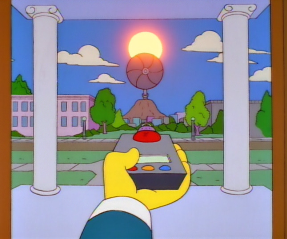Posted on March 17th, 2009 at 1:42 pm by Steve

This Time magazine article from late 2007 sets the scene:
Geoengineering has long been the province of kooks, but as the difficulty of reducing greenhouse-gas emissions has become harder to ignore, it is slowly emerging as an option of last resort. The tipping point came in 2006, when the Nobel Prize-winning atmospheric scientist Paul Crutzen published an editorial examining the possibility of releasing vast amounts of sulfurous debris into the atmosphere to create a haze that would keep the planet cool. “Over the past couple of years, it’s gone from an outsider thing to something that is increasingly discussed,” says Ken Caldeira of the Carnegie Institution for Science at Stanford University.
Wired’s Danger Room blog has the details:
One scheme calls for adding iron to the ocean, to stimulate the growth of greenhouse gas-absorbing algae. Another for “loading the skies” with sulfate particles that “act as mini-reflectors, shading out sunlight and cooling the Earth.” A third, “covering the Arctic with dust.”
Yes, yes – spread tiny reflectors throughout the stratosphere to reflect away all that dangerous sunlight! What could possibly go wrong? And, who better to explore this topic than… the U. S. military’s Defense Advanced Research Projects Agency?
Science magazine’s Science Insider blog tells us that
An official advisory group to the Defense Advanced Research Projects Agency is convening an unclassified meeting next week to discuss geoengineering… DARPA is the latest in a number of official science funding agencies or top scientific societies that are exploring the controversial idea. But one leading advocate of the work opposes the military developing geoengineering techniques.
I think I’ll let Mr. Burns, that paragon of virtue and human compassion, have the last word:
 “Since the beginning of time man has yearned to destroy the sun. I will do the next best thing…block it out!”
“Since the beginning of time man has yearned to destroy the sun. I will do the next best thing…block it out!”